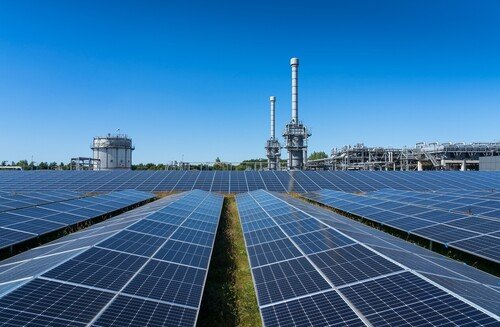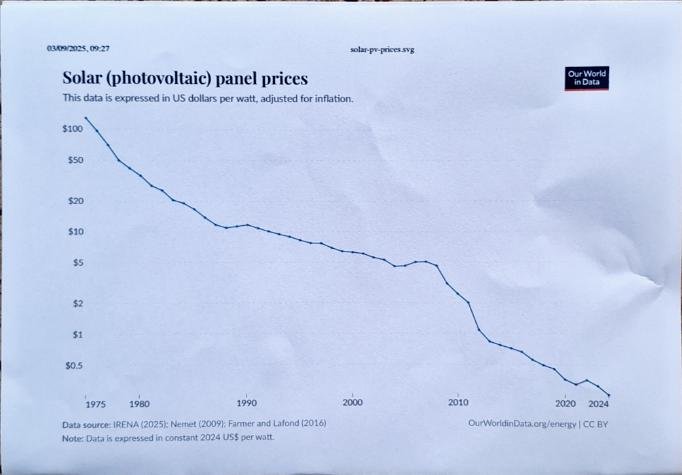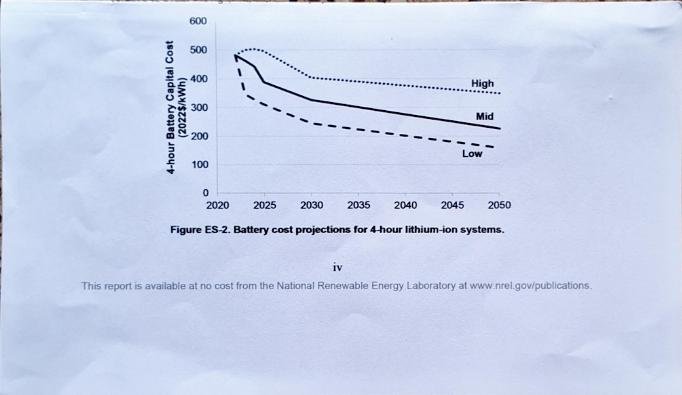Letter by Shri EAS Sarma, Former Secretary to the Government of India

From
E A S Sarma
Former Secretary to the Government of India
To
Shri T V Somanathan
Cabinet Secretary
Govt of India
Dear Shri Somanathan,
I refer to my earlier letter addressed to the Finance Minister on November 23,
2024 (https://countercurrents.org/2024/11/us-district-courts-indictment-of-gautamadani-raises-concerns-about-the-failure-on-the-part-of-the-central-governmentsebi-and-other-institutions/) and another letter of July 18, 2025 addressed to you (https://countercurrents.org/2025/07/a-solar-scam-waiting-to-be-discovered/) on a scam-like situation that has emerged in the case of the Centre’s deliberate policy to promote private solar power generation plants on a large-scale to enable them to profiteer at the cost of the public exchequer, the State DISCOMs and the electricity consumers across the country.
In my letters, I demanded that an independent judicial enquiry be instituted to examine the policy asymmetries that enriched private solar companies, assess the magnitude of undue costs imposed on millions of electricity consumers and to evaluate the fate of the tax-payers’ funds diverted to subsidise private promoters of solar plants, so that the Parliament and the public may get to know how the Centre has placed the interests of private corporate entities over and above the public interest.
The fact that the government has not only failed to respond to the above cited demand but also has consciously chosen not to correct its present erroneous policy and has continued to promote centralised solar power generation by private companies, forces one to conclude that there is brazen complicity at every level of decision-making.
According to a recent report (https://www.downtoearth.org.in/energy/indias-greenenergy-paradox-44-gw-of-renewables-ready-but-no-takers), India today faces a “paradox in its energy sector, with 44 GW of renewable energy ready for deployment but lacking demand due to the absence of Power Purchase Agreements……..High costs, storage challenges, and demand-side weaknesses hinder the integration of renewables into the grid”
The following questions arise from this:
How did the Ministry of Power (MOP), the Ministry of New and Renewable Energy (MNRE), SECI, the States and the Central and the State regulatory authorities permit the setting up of such a huge renewable energy capacity in the first instance, knowing well it is inherently expensive and difficult to be paid for by consumers?
What happened to the massive subsidies given to promoters of all such projects, despite which they continued to supply electricity beyond the means of consumers?
Why did not MNRE vigorously promote less expensive decentralised solar power generation through rooftop systems and solar agricultural pumpsets at consumers’ premises, which enable individual consumers to save costs, sell surplus electricity and earn incomes?
Did MOP/ MNRE know that undue dependence on centralised solar power generation would affect grid stability, necessitate back-up storage support involving additional costs? Considering that those costs are directly attributable to centralised solar power generation plants, why should consumers be forced to bear them?
I am sure that both the Power Ministry and the MNRE know the answers to the above questions but they have deliberately chosen to ignore the same, as a part of a well-orchestrated effort at the highest level to grant undue benefits to promoters of private solar power plants.
Even in the process of creating back-up storage facilities to sustain centralised solar power generation, the authorities seem to benefit private companies at the cost of the tax-payers, the State DISCOMs and the consumers.
For example, the Centre has allocated Rs 9,000 crores of tax-payers’ money to cover 40% of the capital cost of private companies’ storage systems through Viability Gap Funding (VGF), a euphemism for outright subsidy to those private companies (https://cdnbbsr.s3waas.gov.in/s3716e1b8c6cd17b771da77391355749f3/uploads/2024/05/202405031640333573.pdf). In response, the AP government has already floated a tender enquiry (https://www.mercomindia.com/andhra-pradesh-invites-bids-for-1000-mw-2000-mwh-bess-projects) offering VGF to cover 40% of the capital cost of battery storage facilities upto $20,930.23/ MWh for private bidders. While those that set up storage facilities earn profits from it, it is the tax-payers and consumers that bear the costs.
This does not seem to be the end of the subsidy-raj that the Centre has unleashed to somehow keep private promoters of solar plants earn profits. Recent reports indicate (https://psuwatch.com/newsupdates/govt-weighsincentives-for-thermal-plants-to-run-at-40-load-to-aid-re-integration) that “to facilitate the integration of variable Renewable Energy (RE) into the power grid, the government is considering luring reluctant thermal power plants with incentives to get them to operate at a minimum technical load of 40 percent. ‘We want to go beyond compensation and offer these thermal power plants incentives for lowering the minimum technical load further down to 40 percent'”
The NDA government at different levels seems to create newer and newer opportunities for promoters of private companies to earn profits on one excuse or the other. Every such opportunity for a private company to enrich itself has imposed a corresponding cost on the tax-payer or the consumer.
As pointed out in my earlier correspondence, the US District Court’s indictment of Gautam Adani and several others, that they committed acts of malfeasance both in India and the USA, keeping investors in both countries in the dark about bribery and fraud (https://www.justice.gov/usao-edny/media/1377806/dl?inline) and the US Security Exchange Commission (SEC)’s charges against Adani (https://www.sec.gov/newsroom/press-releases/2024-181), read with the Indian authorities displaying inexplicable hesitation to serve the summons issued by the US SEC on those indicted, shows that there is high-level connivance to hush up that part of the solar scam to shield some corporate bigwigs.
Now that the US District Court’s order and the US SEC’s findings provide evidence of bribery in India, the Indian regulator, SEBI and the Indian investigating agencies, the CBI and the ED, which at the drop of a hat pounce on political leaders in opposition, could have initiated investigating the Adani-related matter on their own but have chosen not to act, nor those in the concerned State have tried to proceed against the culprits. That in itself suggests that many senior political leaders at the Centre and in the States are indirectly involved in that part of the solar scam.
What has got revealed from the US Court proceedings cited merely represents one small portion of the larger solar scam that owes its genesis to the way the Centre and the States have gone about promoting private solar power plants indiscriminately.
The all-out promotion of private solar power generation plants is kept alive by the Centre through subsidies in different names, tax concessions and a highly unreasonable must-buy obligation imposed by MOP on State DISCOMs to buy power from those plants, irrespective of costs. It is the State power utilities which are required to set up T&D networks to evacuate power from solar power plants and incur the consequent costs. In addition, the PPAs signed with promoters of solar power plants have such unreasonable clauses as the “deemed generation” provision that requires State DISCOMs to bear 100% of the fixed costs of those power plants, irrespective of whether they have generated electricity or not. Since the PPAs are long-term (15-20 years) contracts, they do not obligate the power plants to take advantage of technological advances that reduce the cost of electricity generation. When some State leaders tried to renegotiate those one-sided PPAs, the Centre sided with the private promoters to frustrate that effort. The subsidies given to private solar power plants by way of PLI and VGF exceed Rs 35,000 crores. Some States, in addition to giving cheap land, subsidised infrastructure facilities and tax concessions, have also offered to subsidise up to 50% of the capital cost of solar panel manufacturers, making a mockery of the distinction between private and public sector roles.
No wonder that promoters of several solar power companies have liberally donated funds to those political parties that have enabled them to do business and earn profits at the cost of the public.
While an electricity consumer or a farmer could set up PV panels at his own premises and readily generate power, the lop-sided policy of the NDA government, aimed at enriching big businesses, has placed greater emphasis on forcing consumers to buy more expensive solar power from distant locations chosen by those big businesses.
For example, one big business house has gone all out to set up solar panels occupying 538 square km of land adjacent to India’s international border, over an area that is five times the size of Paris (https://www.adanigreenenergy.com/newsroom/media-releases/adani-green-energy-operationalizes-1000-mw-ofthe-30000-mw-khavda-renewable-energy-park). Another corporate oligarch competing with him, is setting up a solar project occupying an area big enough to accommodate three Singapore-like cities (https://www.india.com/business/3-singapores-can-fit-in-mukesh-ambanis-new-solar-project-which-will-meet-10-ofindias-electricity-needs-kutch-gujarat-reliance-industries-limited-jamnagar-kandla-8044813/). It is the Indian tax-payer and the electricity consumer that pay for their adventurism. Considering that the location of those solar plants is near the international border, there are security implications that have apparently been brushed aside.
The global solar and renewable energy scenario points to rapid technological advances, which are bringing down the cost of solar power and energy storage systems every day.
For example, the last four decades, the solar PV panel prices have declined steeply, as indicated below:

Similarly, the battery storage costs have also been declining fast, as illustrated below:

By committing the nation’s future and the future of the consumers to technologies that will soon become obsolete, is not the government closing the technological options available to electricity consumers for decades to come, thus depriving them of the benefits of access to cheaper electricity?
While the Ministry of Renewable Energy has no doubt undertaken a half-hearted scheme to promote rooftop solar panels to benefit individual consumers, the financial incentives they get are miniscule compared to what promoters of centralised plants get. While private oligarchs have the Centre’s and States’ 100% back up to sell their costly power to consumers, the price at which a rooftop supplier gets from the State does not enable him to recover his costs fully, leave alone allowing him to earn some income. In the ultimate analysis, even in the guise of promoting decentralised solar power generation, the Centre is allowing private solar manufacturers to profiteer! One solar PV panel supplier, for example, earned a net profit of Rs 3,133 crores in 2024, which points to private businesses profiteering at the cost of even rooftop generators of electricity.
Considering that the total consumption of electricity in the domestic sector in India is more than 330 billion units per year, even if the net impact on the domestic tariffs as result of expensive privately generated solar power translates to Rs1 per unit, the effective transfer of resources from the pockets of domestic consumers to the coffers of private solar power promoters would be Rs 33,000 crores annually! This is in addition to Rs 35,000 crores given to private solar power promoters explicitly as subsidies and the several hidden subventions given to them by the Centre and the States.
From what has been indicated above, the whole range of lop-sided policy decisions taken to help big businesses to profiteer at the cost of the public seem to be part of a well-orchestrated scam that calls for an independent judicial enquiry. Such an inquiry is necessary, as already suggested, to examine the policy asymmetries that enriched private solar companies, to assess the magnitude of undue costs imposed on millions of electricity consumers and to evaluate the fate of the tax-payers’ funds diverted to subsidise private promoters of solar plants, so that the Parliament and the public may get to know how the Centre and the States have placed the interests of private corporate entities over and above the public interest.
I hope that you, as the head of the civil services, will unhesitatingly initiate steps for instituting such a judicial enquiry.
I have marked a copy of this letter to the SEBI, the CBI and the ED to do their part of the investigation.
Regards,
Yours sincerely,
E A S Sarma
Visakhapatnam
September 4, 2025
